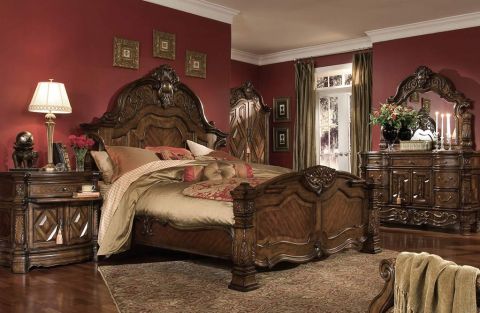Exploring the allure of Colonial Antique furniture
2024-12-27 17:00:12
In the ever-evolving landscape of interior design, certain styles stand the test of time, preserving the charm and elegance of bygone eras. Colonial antique furniture is one such embodiment of enduring beauty, a timeless genre that continues to captivate enthusiasts and collectors alike. This article delves into the rich history, distinctive characteristics, and enduring appeal of colonial antique furniture, shedding light on the craftsmanship and cultural influences that have shaped these pieces over the centuries.

A Glimpse into History:
Colonial furniture, originating from the American colonies in the 17th and 18th centuries, reflects the diverse influences of European styles adapted to suit the new world. The period witnessed a fusion of English, Dutch, French, and Spanish design elements, resulting in a unique blend that encapsulates the spirit of early American craftsmanship. The scarcity of materials and the need for practicality in the face of a challenging environment also played a pivotal role in shaping the distinctive features of colonial furniture.
Key Characteristics:
Colonial antique furniture is characterized by its simplicity, functionality, and durability. Craftsmen of this era prioritized practicality, creating pieces that served a dual purpose of functionality and aesthetic appeal. Straight lines, sturdy construction, and minimal ornamentation are hallmarks of this style, reflecting the utilitarian values of the time.
Common wood choices included oak, pine, cherry, and maple, with each wood type imparting its own unique character to the furniture. Hand-carved detailing, such as turned legs and simple moldings, added a touch of elegance without compromising the overall practicality of the pieces.
Popular Types of Colonial Furniture:
Highboy and Lowboy Chests: Highboys and lowboys are iconic examples of colonial furniture, showcasing the craftsmanship and attention to detail prevalent during this era. Highboys, towering pieces with a chest of drawers on top of a lower section, often featured intricate carvings and turned legs. In contrast, lowboys were shorter and wider, serving as elegant dressing tables with drawers for storage.
Tavern Tables: Tavern tables were a common sight in colonial inns and homes. Characterized by simple designs and sturdy construction, these tables were designed to withstand the rigors of daily use. Their versatile nature made them ideal for dining, writing, or playing games, reflecting the multifunctional aspects valued in colonial households.
Four-Poster Beds: Four-poster beds exemplify the blend of comfort and aesthetics in colonial bedrooms. Crafted with solid wood, these beds featured distinctive posters at each corner, often adorned with intricate carvings. The high posts allowed for the draping of fabrics, adding an extra layer of luxury to these functional pieces.
Enduring Appeal:
The enduring appeal of colonial antique furniture lies in its ability to seamlessly integrate into diverse contemporary settings. The clean lines and timeless designs make these pieces versatile additions to modern homes, whether as standalone statement pieces or as part of a carefully curated vintage-inspired decor.
Authenticity and Craftsmanship: The craftsmanship of colonial furniture, with its hand-carved details and attention to construction, adds an authentic touch to any space. In an era dominated by mass-produced furniture, owning a piece of colonial history provides a sense of connection to a bygone era.
Versatility in Modern Design: The simplicity and versatility of colonial furniture make it adaptable to various interior design styles. Whether incorporated into a farmhouse-style kitchen, a traditional living room, or a contemporary bedroom, these pieces effortlessly bridge the gap between the past and the present.
Investment Value: Beyond their aesthetic appeal, colonial antique furniture often holds significant investment value. Genuine pieces from the colonial era are increasingly sought after by collectors, contributing to the enduring popularity of these timeless treasures.
Preserving Colonial Antiques:
To maintain the integrity and value of colonial antique furniture, proper care and preservation are essential. Here are some tips for collectors and enthusiasts:
Avoid Harsh Cleaning Agents: Gentle cleaning with a soft cloth and mild, non-abrasive cleaners is recommended. Harsh chemicals can damage the patina and finish of the wood.
Control Temperature and Humidity: Wood is sensitive to fluctuations in temperature and humidity. Maintaining a stable environment helps prevent warping, cracking, or other damage to the furniture.
Protect from Sunlight: Direct sunlight can fade and damage wood over time. Position colonial furniture away from windows or use window coverings to shield the pieces from excessive sunlight exposure.
Regular Inspections: Periodic inspections for signs of pests, loose joints, or other issues can help catch potential problems early, allowing for timely repairs.
Colonial antique furniture stands as a testament to the craftsmanship and cultural influences of a bygone era. Its enduring appeal lies not only in the aesthetic charm but also in the versatility and authenticity it brings to contemporary spaces. As we continue to cherish the rich history embedded in these pieces, colonial furniture remains a timeless choice, inviting us to appreciate the artistry and practicality of the past in our present-day lives.











